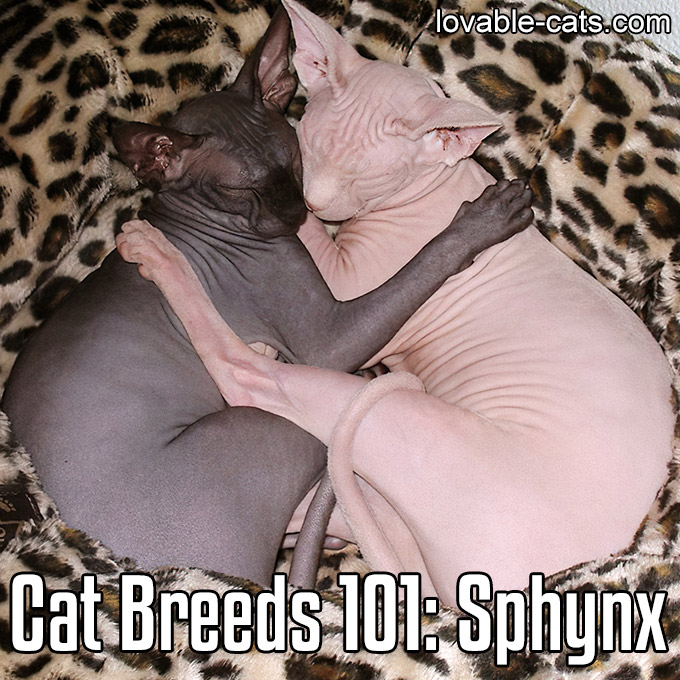
Cat Breeds 101: Sphynx – Image To Repin / Share
Photo: Wikipedia – lic. under CC 3.0
The Sphynx is probably one of the most intriguing and strange cats you will ever see: It is a special breed of feline best distinguished from the others due to its lack of fur. People are more accustomed to seeing cats with long, thick and shiny fur, so to see a coatless feline will definitely be a surprise.
Because of its missing coat, this breed is usually warm to the touch. Their body may contain various marking patterns, which may include tortie, tabby, van, point and solid. Some have eyebrows and whiskers while others don’t.
The origin of hairless felines can be traced be traced to the time of Aztecs, but it was only in 1966 when sphynx was recognized. The breed was initially known as Canadian Hairless or Moonstone. The origin of this breed came from a hairless kitten which was known as Prune who was born to a shorthair queen of Canada. Eventually, Prune mated with his mother which yield another hairless kitten.
Despite their unusual physical appearance, the Sphynx is known for its extrovert behavior. They often possess high level of energy at home. In addition to their impressive intelligence, inquisitiveness, and curiosity, Sphynx cats are known for their heartwarming affection to their owners. [1] In fact, due to their love, loyalty, and devotion to their families, this breed is also referred to as the “love mooch”.
This breed is known to be lovable and mischievous. In fact, as they try to become the center of attention, they can sometimes be clumsy. They always want to be with their owners, and try to show off for them most of time time. Though they enjoy the company of dogs and other pets at home, Sphynx seem to prefer the attention of their owners. [2] In general, the breed is friendly in nature. They are easily handled, even by strangers.
Due to lack of hair, the Sphynx may require bathing and grooming often. Though brushing is not required, regular bathing is essential to keep your furniture and objects at home free from oils which are produced by sphynx. [3] During the first two weeks of their lives, sphynx cats may be susceptible to respiratory infections due to lack of hair. [4]
References:
[1] https://en.wikipedia.org/wiki/Sphynx_(cat)
[2] https://www.cfa.org/Breeds/BreedsSthruT/Sphynx.aspx
[3] https://www.catster.com/cat-breeds/Sphynx
[4] https://www.tica.org/public/breeds/sx/intro.php
